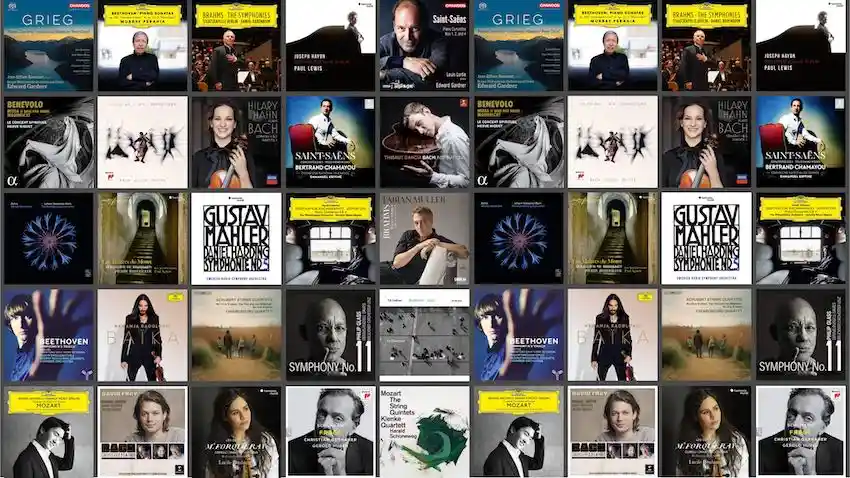Lars Vogt is no stranger to Mozart, however, this is his first disc of the composer’s music we’ve seen from this artist in quite a few years. The disc contains four sonatas, all of them relatively early, which are performed in chronological order. Vogt takes us on an exploration of how Mozart developed as a composer with these well-chosen and complementary sonatas. The choice to place the A minor sonata K.333 third creates some contrast in a nicely balanced program.
The F major sonata K.280 is played with a sense of refinement throughout. Vogt is not shy of incorporating rubato, but this is used sensitively to intensify expression. The left-hand across all three movements is well balanced and has some finely shaped details, especially in the first movement when the raising bass figures are shaped in an unexpected way (0:38, track 1). The second movement, which perhaps looks forward to the slow movement of the A major concerto K.488, is played with real sensitivity, the emotional intensity grows as Vogt darkens the mood. The finale of this sonata is understated, beautifully handled, but missing the youthful vigor and energy of early Mozart.
Peter Donohoe, in his recent recording of the same sonata reviewed in these pages, takes a very different approach, much simpler and less lyrical with closer attention to rhythmical details. Donohoe’s tone — brighter in color, is more suited to the thinner textures found in Mozart’s piano writing. Where Vogt is more restrained in the third movement, Donohoe finds a greater sense of fun in this pleasing Haydnesque finale.
Get periodic updates about new classical music albums reviews, news and guides.
We respect your privacy.
The sonata K.281 in B-flat is played throughout with a pensive vision. All three movements know exactly where they want to go and what they want to say. The second movement has moments of real introspection and there is further use of rubato. The Rondeau finale has numerous fine moments, the trills are especially impressive for their extraordinary balance within the texture.
Expressive Freedom
The boldest sonata on this album is certainly the A minor K.310. Here, Vogt is less observant of some of the musical detail in the score, but this doesn’t mean there is disregard — Vogt takes expressive freedom. The left-hand is prevalent and meticulous, with the pianist bringing out notes which emphasize the harmonic direction in each of the three movements. The darker moments of the slow movement are handled sensitively with an impeccable balance between the hands.
The final work, The Sonata in B-flat K.333, is full of fine musical details. Vogt doesn’t always bring out the most obvious musical features across the work, but opts to bring out some of the lines usually hidden in the texture. This isn’t a performance all about the top melodic part, but about the music below it. This is by no means random, as Vogt is judicious in his choices of which lines come to the fore.
The piano is cleanly recorded, close enough to capture all the detail, but without any extraneous sounds from the instrument and the acoustics, it makes the recording feel up close and personal without being overbearing. The booklet replaces the usual programmatic notes with an interview between the pianist and Friederike Westerhaus, offering insights into the interpretation of each sonata.
Vogt doesn’t have the same classical precision or sophistication as the likes of Mitsuko Uchida or the seriousness of Alfred Brendel, but has a warmth of tone and emotion which is expressive, thoughtful and insightful. He isn’t rigid in which repeats he observes. What is apparent in the performances is that there is less emphasis on the structures within the music, and more on the musical character of each sonata. There is a consistency, a vision, from the first to the last note of every work in these considered interpretations. The middle movements of both K.310 and K.333 have an impromptu quality, as if just flowing from Vogt’s fingers.
This pleasing release from Ondine is hopefully the first in what could be a very intriguing and contrasting series of Mozart piano sonatas. If you like Mozart with a sense of poetry and less confined to the score, this recording is worth your consideration.

Mozart – Piano Sonatas K280, K281, K310, K333
Lars Vogt – Piano
Ondine Records, CD ODE 1318-2
Albums mentioned in this review:
Related Review:
Follow Us and Comment:
Get our periodic classical music newsletter with our recent reviews, news and beginners guides.
We respect your privacy.









